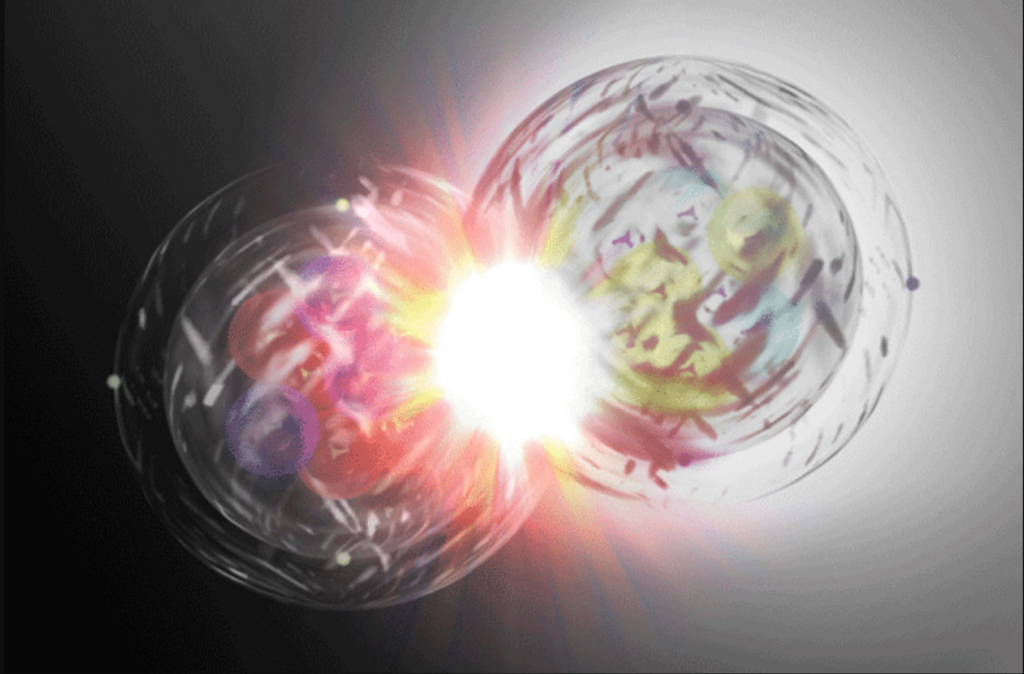One of the greatest mysteries of physics and cosmology is why the universe is made of matter and not antimatter. Matter and antimatter are opposite forms of the same substance, with opposite electric charges and other properties. When they meet, they annihilate each other in a burst of energy. According to the standard model of particle physics, the Big Bang should have produced equal amounts of matter and antimatter, which should have wiped each other out, leaving nothing but radiation. However, somehow, a tiny excess of matter survived, and formed the stars, planets, and life we see today. How and why this happened is still unknown, and is one of the main goals of antimatter research
Matter and Antimatter
Antimatter research is the study of the nature, properties, and behavior of antimatter particles, such as antiprotons, antineutrons, and positrons. Antimatter particles are extremely rare and difficult to produce and detect, as they are instantly destroyed when they encounter normal matter. Therefore, antimatter research requires advanced and sophisticated technologies and facilities, such as particle accelerators, storage rings, and detectors, which can create, manipulate, and measure antimatter particles under controlled conditions
One of the leading institutions for antimatter research is CERN, the European Organization for Nuclear Research, located near Geneva, Switzerland. CERN is home to the Large Hadron Collider (LHC), the world’s largest and most powerful particle accelerator, which can smash protons together at near-light speeds, creating a variety of particles, including antimatter particles. CERN also hosts several experiments and projects dedicated to antimatter research, such as ALPHA, ASACUSA, ATRAP, and BASE, which aim to test and compare the properties and behavior of matter and antimatter particles, such as their mass, charge, magnetic moment, and gravity
Also read : Beyond Einstein: Unraveling One Of The Great Mysteries Of Cosmology

One of the most recent and remarkable achievements of antimatter research at CERN is the discovery of novel senolytic compounds, a class of drugs that can selectively kill or eliminate senescent cells, which are cells that have stopped dividing and have accumulated damage and dysfunction over time. Senescent cells are considered to be one of the major drivers of ageing and age-related diseases, such as cancer, diabetes, and Alzheimer’s, as they secrete harmful substances that cause inflammation, tissue degeneration, and impaired regeneration. Therefore, removing senescent cells can improve health and lifespan by reducing ageing and its associated complications
However, finding effective and safe senolytic compounds is not an easy task, as it requires screening and testing millions of potential candidates, which is time-consuming, costly, and labor-intensive. This is where artificial intelligence (AI) comes in handy, as it can accelerate and optimize the process of drug discovery, by using advanced algorithms and techniques, such as machine learning, deep learning, and neural networks, to analyze large and complex datasets, generate and evaluate hypotheses, and predict and optimize outcomes

A team of researchers from Integrated Biosciences, a biotechnology company that combines synthetic biology and machine learning to target ageing, demonstrated the power of AI to discover novel senolytic compounds, in a study published in the May issue of Nature Aging. The researchers used a deep neural network, a type of AI that mimics the structure and function of the human brain, to screen and rank over 100 million chemical compounds, based on their predicted ability to kill senescent cells. The AI then selected the top 10 candidates, which were synthesized and tested in the laboratory. The results showed that three of the compounds were indeed effective and selective senolytics, which could reduce senescent cells and improve tissue function in mice. The whole process took only a few weeks, compared to the years or decades that traditional methods would require
The researchers claim that this is the first time that AI has been used to discover senolytic compounds, and that this is a proof-of-concept that AI can be a powerful and efficient tool for anti-ageing research and drug development. They also hope that their findings will inspire further studies and collaborations to explore and validate the potential of these and other senolytic compounds, as well as to develop and optimize new AI models and methods for drug discovery

How new antimatter science could soon explain the existence of everything is a fascinating and exciting topic that shows how antimatter research and AI can help to tackle one of the biggest challenges and opportunities of our time: ageing. By using antimatter research and AI, scientists can discover new and better ways to prevent, delay, or reverse ageing and its related diseases, and to improve the quality and quantity of life for humans and animals. However, antimatter research and AI also pose some risks and challenges, such as ethical, social, legal, and regulatory issues, that need to be addressed and resolved before antimatter research and AI can be widely and safely applied and implemented in the field of anti-ageing. Therefore, antimatter research and AI are not magic bullets or panaceas, but rather tools or partners, that can help us to achieve our goals and aspirations, as long as we use them wisely and responsibly
Also read : This Is How An Artificial intelligence-Versus-Humanity Conflict Would Truly Conclude




































